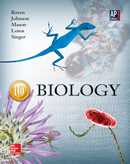1 A) Scanning electron microscope B) Transmission electron microscope C) Compound microscope D) Phase-contrast microscope E) Dark-field microscope 2 A) as the command center for the cell B) to store the cell's hereditary information C) to house the nucleolus D) to selectively allow certain molecules access to the genetic material and to exit to the cytoplasm E) All of the choices are correct. 3 A) nucleolus B) nucleoid C) mitochondria D) golgi apparatus E) endoplasmic reticulum 4 A) Mitochondria B) Ribosomes C) Golgi bodies D) Peroxisomes E) Vacuole 5 A) ribosomes; nucleolus B) Golgi complex; endoplasmic reticulum C) peroxisomes; lysosomes D) nucloid; flagella E) chloroplasts; mitochondria 6 A) Golgi complex B) endoplasmic reticulum C) mitochondria D) nucleus E) peroxisome 7 A) ribosome B) lysosome C) vacuoles D) endoplasmic reticulum E) centriole 8 A) Animals and protists B) Plants and animals C) Fungi and protists D) Plants and fungi E) ALL living cells contain centrioles 9 A) the nuclear membrane B) pericentriolar material C) centrioles D) centrosomes E) centromeres 10 A) True B) False 11 A) nucleoli B) chromatin C) chromosomes D) nuclear pores E) endoplasmic reticulum 12 A) Synthesizing protein B) Packaging protein C) Sorting protein D) Collecting protein E) All of these are functions of the Golgi apparatus 13 A) True B) False 14 A) Actin, myosin, and centrioles B) Actin, tubulin, and myosin C) Microtubules, microfilaments, and intermediate filaments D) Proteins, phospholipids, and polysaccharides E) Vesicles, connector molecules, and molecular motors 15 A) intermediate filaments B) centrioles C) centrosomes D) ribosomes E) flagella 16 A) allow small molecules and ions to pass rapidly between cells. B) are both membrane lined channels. C) are channels about 1 mm in diameter. D) are present are in small numbers in a cell. E) are involved in cell recognition in signaling. 17 A) It must have hydrophilic properties B) It must have hydrophobic properties C) It must have sulfur in its structure D) It must degrade DNA E) It needs to have many alpha helices





